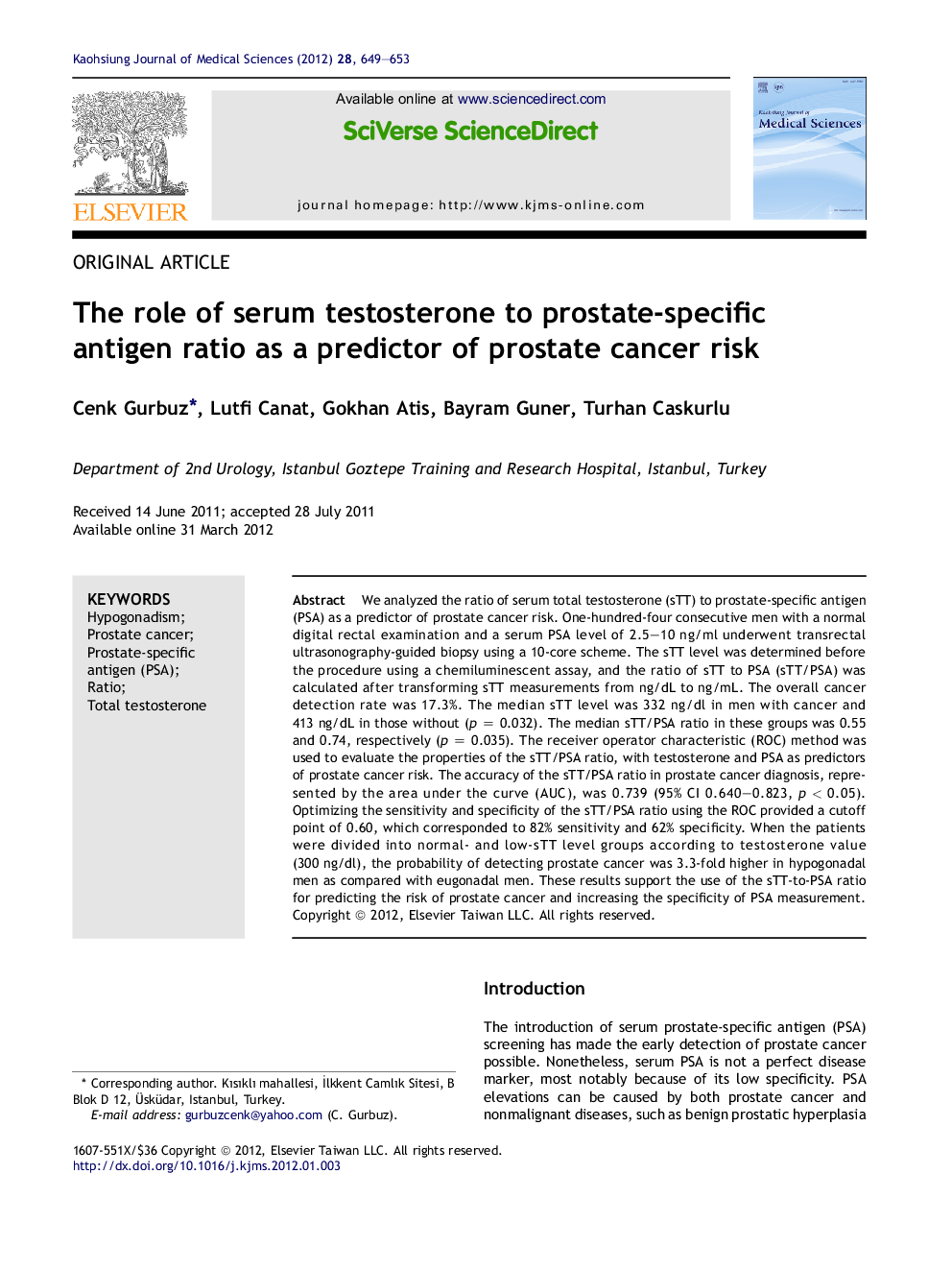| Article ID | Journal | Published Year | Pages | File Type |
|---|---|---|---|---|
| 3485678 | The Kaohsiung Journal of Medical Sciences | 2012 | 5 Pages |
We analyzed the ratio of serum total testosterone (sTT) to prostate-specific antigen (PSA) as a predictor of prostate cancer risk. One-hundred-four consecutive men with a normal digital rectal examination and a serum PSA level of 2.5–10 ng/ml underwent transrectal ultrasonography-guided biopsy using a 10-core scheme. The sTT level was determined before the procedure using a chemiluminescent assay, and the ratio of sTT to PSA (sTT/PSA) was calculated after transforming sTT measurements from ng/dL to ng/mL. The overall cancer detection rate was 17.3%. The median sTT level was 332 ng/dl in men with cancer and 413 ng/dL in those without (p = 0.032). The median sTT/PSA ratio in these groups was 0.55 and 0.74, respectively (p = 0.035). The receiver operator characteristic (ROC) method was used to evaluate the properties of the sTT/PSA ratio, with testosterone and PSA as predictors of prostate cancer risk. The accuracy of the sTT/PSA ratio in prostate cancer diagnosis, represented by the area under the curve (AUC), was 0.739 (95% CI 0.640–0.823, p < 0.05). Optimizing the sensitivity and specificity of the sTT/PSA ratio using the ROC provided a cutoff point of 0.60, which corresponded to 82% sensitivity and 62% specificity. When the patients were divided into normal- and low-sTT level groups according to testosterone value (300 ng/dl), the probability of detecting prostate cancer was 3.3-fold higher in hypogonadal men as compared with eugonadal men. These results support the use of the sTT-to-PSA ratio for predicting the risk of prostate cancer and increasing the specificity of PSA measurement.
